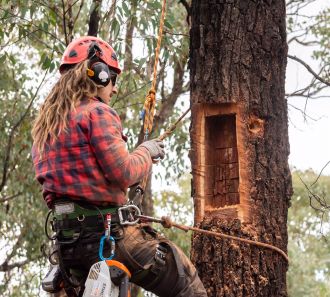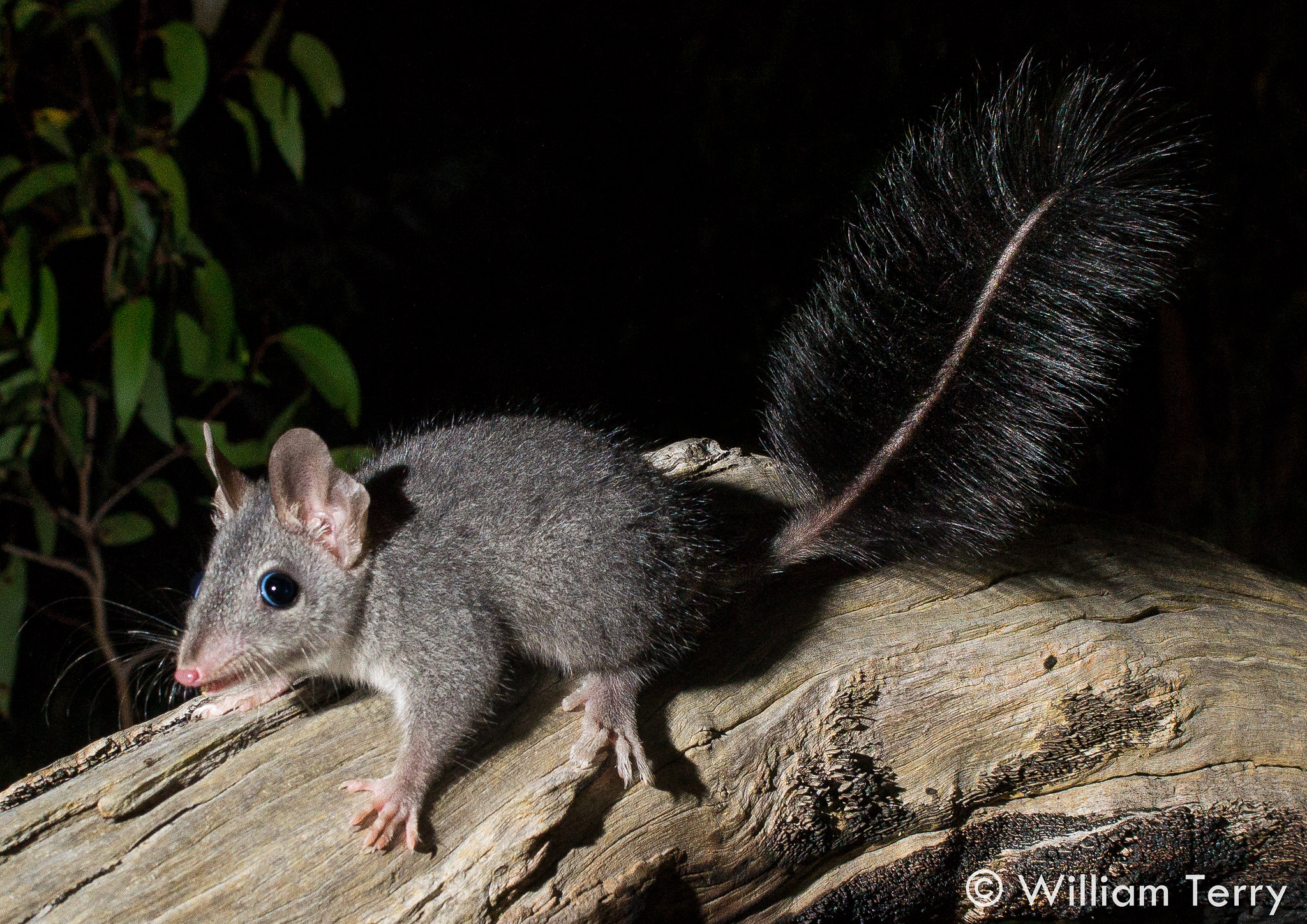News release
From:
Carving out new homes for tree-climbing marsupials, when natural tree hollows are no longer readily available, is proving successful, a new Southern Cross University study has found.
Chainsaw hollows – a novel approach best-described as a cross between a nest box and a tree hollow – is an emerging technique of creating artificial tree cavities to address the shortage of natural hollows throughout the world.
More than 300 species in Australia rely on natural tree hollows for refuge and breeding.
The study, led by PhD researcher William Terry to analyse the technique’s effectiveness, discovered that arboreal mammals will readily use the chainsaw hollows but highlighted that periodic maintenance will be required to ensure animals can continue to access them freely.
“Tree hollows carved by chainsaws have potential to restore degraded forest habitats. It’s certainly not a substitute for natural tree hollows but are more effective than next boxes for the two species we studied, the regionally threatened brush-tailed phascogale (Phascogale tapoatafa) and the non-threatened sugar glider (Petaurus notatus),” Mr Terry said.
The chainsaw hollow is achieved by cutting a cavity on the side of the tree then covering it with a pre-fabricated timber faceplate and providing an access hole.
The team conducted experiments over a 2.5 year period by pairing 45 chainsaw hollows with nest boxes of equivalent internal dimensions in eight locations around Bendigo, Castlemaine and Kyneton districts in Central Victoria.
Camera traps revealed phascogales visited some cavities within hours of installation and monthly inspections revealed rapid uptake of these hollows by both target species.
“Phascogales and sugar gliders were detected more often in carved hollows than in nest boxes,” said Mr Terry.
Overall, phascogales and sugar gliders used 32% and 84% of the chainsaw hollows respectively, and 21% and 82% of the nest boxes.
Some tree species had relatively rapid growth of bark over faceplates and no trees failure during the experiment.
Some researchers have been critical of the use of nest boxes as they offer little in the way of protection from extreme temperatures and usually only have short lifespans (compared to that of natural tree hollows). In contrast, chainsaw hollows do a much better job at protecting animals from external temperatures. This will be critical for many animal species as the environment becomes hotter under climate change.
Multimedia





 Australia; NSW; VIC; QLD
Australia; NSW; VIC; QLD


